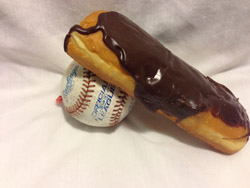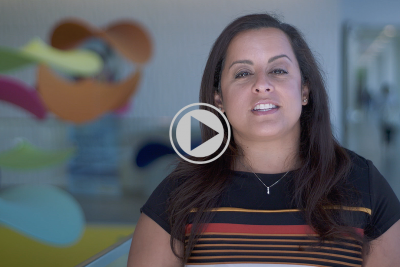I admit it, I know more about the contents of Parenting magazine than Sports Illustrated. My TV  spends much more time on the Disney Channel than on the ESPN Sports Network. So, it should come as no surprise that this week when I kept hearing about “Tommy John” surgery on the news, a chocolate iced donut came to mind, not an elbow. As a pediatrician, especially one that sees injured kids in the emergency room, I wondered why I wasn’t familiar with the surgery. What exactly was injured when someone needed Tommy John surgery? Did kids ever need Tommy John surgery? Is there a way to prevent the injury? And of course, why is it called “Tommy John” surgery?
spends much more time on the Disney Channel than on the ESPN Sports Network. So, it should come as no surprise that this week when I kept hearing about “Tommy John” surgery on the news, a chocolate iced donut came to mind, not an elbow. As a pediatrician, especially one that sees injured kids in the emergency room, I wondered why I wasn’t familiar with the surgery. What exactly was injured when someone needed Tommy John surgery? Did kids ever need Tommy John surgery? Is there a way to prevent the injury? And of course, why is it called “Tommy John” surgery?
Whether your little one is still learning to roll her first ball or the star of his high school baseball team, it is never too early to learn about sports injuries and how to prevent them.
What is Tommy John Surgery?
Tommy John Surgery is ulnar collateral ligament reconstruction. The surgery is done to repair a damaged ligament (the UCL) in the elbow. Pioneered by Dr. Frank Jobe, the surgery was first done in 1974 when Dodgers pitcher, Tommy John, experienced an injury that had ended the careers of pitchers until that time. After the surgery, John not only was able to return to professional baseball after two years of extensive rehabilitation; he went on to pitch professionally for 13 more years.
The Impact on Little League Players
What does this mean for your little league player? Actually, quite a bit. But not in the way you may think. Tommy John surgery isn’t elective surgery. It isn’t the creation of the modern-day bionic arm. Tommy John surgery is surgery that is needed in athletes that have overused their arm to the point of no return. Physical therapy alone won’t fix the damage. Many non-professional athletes with this injury will go on to have life-long pain and decreased use of the elbow. Yet, kids (and their parents) tend to emulate their professional athlete heroes. So, according to a study done by Ahmad Etal, 30% of coaches, 37% of parents, and 51% of high school athletes felt that the surgery should be performed electively on players who did not have elbow injuries solely to enhance performance. The same survey showed that more than 20% of those surveyed expected the athlete returned to play in less than 9 months instead of the 10 months to 2 years time for rehab in most athletes who have access to the best rehabilitation.
The Race to Be The Best
Numerous reports suggest a recent rapid increase in elbow injury rates in young baseball pitchers1. Currently, 5% of youth suffer an elbow or shoulder injury requiring surgery or retirement from baseball. According to Chief of Pediatric Orthopedic Surgery at Washington University and St. Louis Children’s Hospital, Dr. J. Eric Gordon, “in attempting to become the best pitchers and earn coveted spots on college baseball teams, kids are playing more and more baseball.” He said that injuring their arms leads not only to the end of their baseball careers but for many, life-long pain. “Most professional baseball pitchers did not pitch as children. Most-played other positions when they were younger. In fact, the majority didn’t begin pitching until college.”
Advice From Tommy John
In a CNN interview, Tommy John elaborated further:
John says it’s because coaches overwork young players in today’s game. Most kids, according to John, pitch year-round, while their arms are still developing. “Did Steve Carlton throw 12 months out of the year? No. Why would you take guys that are less skilled and younger and abuse their arm for 12 months when the best in the world don’t do it for 12 months?” John said.
So, what are the take-home messages for your starry-eyed little baseball player?
- Preventing injury is the answer to life-long play and a future in baseball as well as most other sports.
- The strongest risk factor for injury is the amount of pitching.
- Adolescents who competitively pitch more than 85 pitches per game, more than 8 months out of the year or continue to pitch when they are experiencing arm fatigue greatly increase the risks of serious injury. 2
- Poor pitching biomechanics are felt to increase risks.
So as Tommy John suggested, baby those baby arms.




excellent post, very informative. I ponder
why the other experts of this sector do not understand this.
You must continue your writing. I am sure, you have a great readers’ base already!